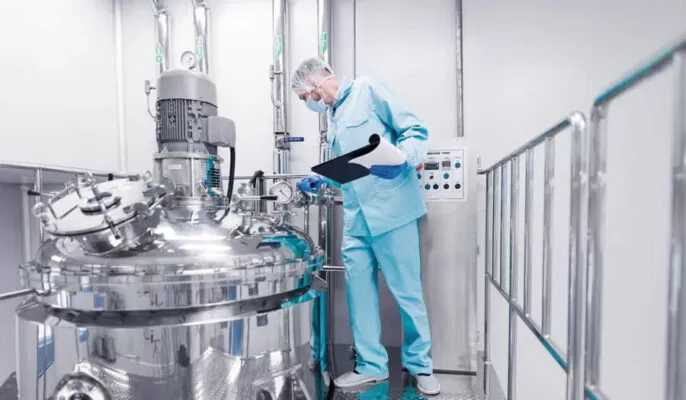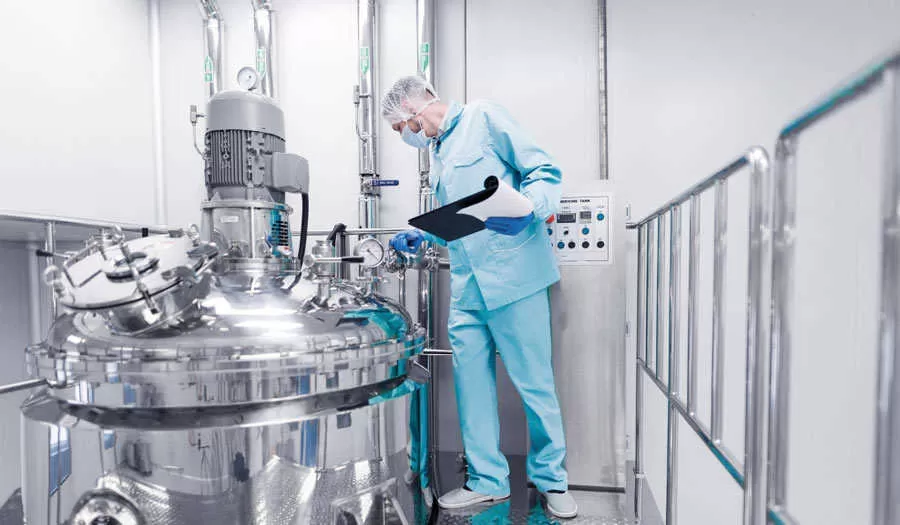In the world of brewing, the fermentation process is a crucial step that transforms the sweet wort into the delightful elixir we know as beer. Behind this transformative process lies the unsung hero, the beer fermentation tank. In this article, we will dive deep into the world of beer fermentation tanks, exploring their importance, design, controlling the fermentation process, common challenges, and tips for optimal fermentation.
Introduction to Beer Fermentation Tanks
Beer fermentation tanks play a pivotal role in the brewing process. They provide an environment where yeast converts the fermentable sugars in the wort into alcohol and carbon dioxide. This process, known as fermentation, creates the unique flavors, aromas, and carbonation that define different beer styles.
The Importance of Beer Fermentation Tanks in the Brewing Process
Beer fermentation tanks play a crucial role in the brewing process, as they provide an environment where yeast can work its magic. Without these specialized vessels, the fermentation process would not be possible, and beer as we know it would not exist. Here are some key reasons why beer fermentation tanks are of utmost importance:
- Creating Alcohol and Carbon Dioxide: During fermentation, yeast consumes the sugars present in the wort and converts them into alcohol and carbon dioxide. This metabolic process is responsible for the alcohol content and natural carbonation in beer.
- Developing Unique Flavors and Aromas: Fermentation is not just about alcohol production; it also plays a vital role in developing the complex flavors and aromas that make each beer style unique. The yeast produces various compounds, such as esters and phenols, which contribute to the beer’s character and taste.
- Maintaining Optimal Conditions: Fermentation tanks provide a controlled and airtight environment where yeast can thrive. The tanks ensure that the temperature, pressure, and other conditions remain within the desired range for optimal fermentation. This control allows brewers to achieve consistency in their beer production.
- Separating Beer from Sediment: Fermentation tanks, especially conical fermenters, aid in the separation of beer from the sediment. The conical shape allows the yeast and other particles to settle at the bottom, making it easier to collect clear beer without unwanted sediment.
What is a Beer Fermentation Tank?
A beer fermentation tank is a specialized vessel designed specifically for the fermentation process in brewing. It provides an airtight and controlled environment where yeast can ferment the sugars present in the wort, resulting in the transformation of the liquid into beer. Fermentation tanks are typically made of high-quality materials, such as stainless steel, that are resistant to corrosion and easy to clean.
Types of Beer Fermentation Tanks
Brewers have different types of fermentation tanks to choose from, depending on their brewing techniques and beer styles. Here are a few commonly used types:
- Open Fermenters: These tanks are wide and shallow, allowing for a larger surface area exposure. They are typically used for traditional beer styles like Belgian ales, where the release of carbon dioxide during fermentation is desired.
- Conical Fermenters: Conical fermenters have a conical shape, which allows the sediment, including yeast and other solids, to settle at the bottom. This shape makes it easier to separate the beer from the sediment, resulting in clearer beer.
- Uni-tanks: Uni-tanks are versatile tanks that can be used for both fermentation and maturation. They often have built-in temperature control systems and can handle various beer styles, providing flexibility to brewers.
Factors to Consider When Choosing a Fermentation Tank
When selecting a fermentation tank, brewers need to consider several factors to ensure optimal fermentation and consistent beer production. Some key factors to consider include:
- Tank Material and Construction: The material of the tank should be suitable for food-grade applications, such as stainless steel. The construction should be sturdy and durable to withstand the pressure and conditions during fermentation.
- Insulation and Cooling Systems: Proper insulation is essential to maintain a stable temperature during fermentation. Cooling systems, such as glycol jackets or coils, help regulate and control the fermentation temperature for different beer styles.
- Pressure Control and Monitoring: Some beer styles require specific levels of carbonation, which can be achieved by controlling the pressure inside the fermentation tank. Pressure relief valves and pressure gauges allow brewers to monitor and adjust the pressure as needed.
- Cleaning and Sanitization Features: Maintaining cleanliness and sanitation is crucial to prevent contamination and off-flavors during fermentation. The fermentation tank should have features that facilitate thorough cleaning and sanitization, such as CIP (clean-in-place) systems, spray balls, and easy access for manual cleaning.
- Size and Capacity: The size and capacity of the fermentation tank should align with the brewing volume and production requirements. It should be able to accommodate the desired batch size and allow enough headspace for the foaming and expansion that occur during fermentation.
- Flexibility and Adaptability: Consider the versatility of the fermentation tank. Can it handle different beer styles and fermentation techniques? Does it have the necessary fittings and ports for adding adjuncts or monitoring devices, if required?By carefully considering these factors, brewers can select the right fermentation tank that meets their specific brewing needs and contributes to the overall quality and consistency of their beer.
In conclusion, beer fermentation tanks are of paramount importance in the brewing process. They provide an essential environment for yeast to convert sugars into alcohol, produce carbon dioxide, and develop the unique flavors and aromas that define different beer styles. The choice of fermentation tank, along with its design features and functionalities, plays a crucial role in ensuring optimal fermentation conditions, maintaining cleanliness and sanitation, and achieving consistent and high-quality beer production.

The Design and Features of Beer Fermentation Tanks
The design and features of beer fermentation tanks are crucial in creating an optimal environment for yeast to carry out fermentation and produce high-quality beer. Here are some key aspects of tank design and features that brewers consider:
Tank Material and Construction
Beer fermentation tanks are commonly made from stainless steel due to its durability, hygiene properties, and resistance to corrosion. Stainless steel tanks are easy to clean and maintain, ensuring that no unwanted flavors or contaminants affect the beer during fermentation. The tanks are constructed with precision to ensure a sturdy and leak-proof structure.
Insulation and Cooling Systems
Maintaining the proper fermentation temperature is essential for yeast activity and flavor development. Fermentation tanks are often equipped with insulation to minimize heat exchange with the surroundings and provide a stable environment for fermentation. Additionally, cooling systems, such as glycol jackets or coils, help regulate the temperature within the tank, allowing brewers to achieve precise control over the fermentation process.
Pressure Control and Monitoring
Certain beer styles require specific carbonation levels, which can be achieved by controlling the pressure inside the fermentation tank. The tanks are designed with pressure relief valves and pressure gauges to monitor and adjust the pressure as needed. This ensures that the desired carbonation level is achieved while maintaining the integrity of the tank.
Cleaning and Sanitization
Maintaining cleanliness and proper sanitization of fermentation tanks is crucial to prevent contamination and off-flavors in the beer. Tanks are designed with features that facilitate easy cleaning, such as CIP (clean-in-place) systems and spray balls. These allow for thorough cleaning and sanitization without the need for manual scrubbing, ensuring that the tank remains free from any unwanted residues or microorganisms.
Accessibility and Sampling Points
Fermentation tanks are designed to provide easy access for brewers to monitor the progress of fermentation and take samples for analysis. They are equipped with sampling ports or valves at various heights, allowing brewers to collect representative samples for gravity readings, pH measurements, and sensory evaluation.
Airtight Sealing
To maintain a controlled fermentation environment, it is crucial for fermentation tanks to have airtight sealing. This prevents oxygen from entering the tank, minimizing the risk of oxidation and off-flavors in the beer. The tanks are designed with precision fittings, gaskets, and clamps to ensure a tight seal throughout the fermentation process.
Safety Features
Safety is of paramount importance in brewing operations. Fermentation tanks are equipped with safety features such as pressure relief valves and emergency venting systems to ensure the tank can safely handle any potential pressure buildup during fermentation.
By incorporating these design elements and features, brewers can create an optimal environment for yeast activity, maintain temperature control, prevent contamination, and produce high-quality beer during the fermentation process.
Controlling the Fermentation Process
To achieve consistent and desirable beer flavors, brewers must carefully control the fermentation process. This involves managing various factors, including temperature, yeast levels, and fermentation time.
Temperature Control
Temperature control is paramount during fermentation. Different yeast strains have specific temperature ranges in which they perform optimally. It is essential for brewers to monitor and control the fermentation temperature within these ranges to ensure yeast activity, desired flavors, and to prevent off-flavors.
Maintaining the correct temperature during fermentation is achieved through various methods. Cooling systems, such as glycol jackets or cooling coils, are used to regulate the temperature inside the fermentation tank. Brewers can adjust the cooling system settings to achieve the desired temperature profile for each specific beer style.
Managing Yeast and Oxygen Levels
Managing yeast levels and minimizing oxygen exposure are critical for a healthy fermentation process and desired beer flavors. Brewers carefully calculate and measure the appropriate quantity of yeast to pitch into the fermentation tank. Under-pitching (insufficient yeast) can lead to sluggish fermentation and off-flavors, while over-pitching (excessive yeast) can result in stressed yeast and unwanted flavors.
To minimize oxygen exposure, brewers take precautions at various stages of the brewing process. Oxygen is purged from the fermentation tank before the transfer of wort, and brewers can utilize closed transfer systems to minimize oxygen contact. This helps prevent oxidation, which can lead to off-flavors and stale beer.
Fermentation Time and Secondary Fermentation
The duration of fermentation depends on several factors, including the beer style, yeast strain, and desired characteristics. Primary fermentation typically lasts for a few days to a couple of weeks. During this period, the yeast consumes sugars, producing alcohol and carbon dioxide, and converting complex compounds into desirable flavors and aromas.
Some beer styles may require additional time for secondary fermentation. Secondary fermentation allows for further flavor development and maturation. It can take place in a separate fermentation vessel or within the same tank after transferring the beer off the primary yeast sediment. This extended fermentation period helps create a smoother, well-rounded beer with enhanced flavors and improved clarity.
During secondary fermentation, brewers may choose to add additional ingredients, such as dry hops or specialty sugars, to impart specific flavors or characteristics to the beer. This step allows for customization and the creation of unique beer profiles.
By carefully managing temperature, yeast levels, and fermentation time, brewers can control the fermentation process to achieve the desired beer flavors, ensure consistency, and produce high-quality brews that delight beer enthusiasts.
Common Challenges in Beer Fermentation
Fermentation is a complex process that can be influenced by various factors, and brewers often face certain challenges that can impact the quality and characteristics of the final beer. Understanding and addressing these challenges is essential for producing exceptional brews. Let’s explore some of the common challenges encountered during beer fermentation:
Off-Flavors and Aromas
Off-flavors and aromas in beer can arise from different sources and can significantly impact the overall drinking experience. Improper yeast handling, such as poor yeast health or viability, can lead to off-flavors. Excessive fermentation temperatures can also result in unwanted flavors and aromas. Contamination from wild yeast or bacteria can introduce off-flavors and cause a deterioration in beer quality. Stressed yeast, inadequate oxygen levels, or inadequate nutrient availability during fermentation can also contribute to off-flavors. Identifying the specific causes of off-flavors and taking corrective measures, such as improving yeast health, controlling fermentation temperatures, and maintaining proper sanitation practices, are crucial for producing beer with desirable flavors and aromas.
Contamination and Infection
Contamination and infection can occur during the fermentation process, leading to undesirable consequences in the final product. Unwanted microorganisms, such as wild yeast or bacteria, can find their way into the beer and cause off-flavors, haze, or even spoilage. Contamination can result from inadequate cleaning and sanitization practices, poorly sanitized equipment, or improper handling of yeast and other brewing ingredients. To prevent contamination, brewers must establish strict cleaning and sanitization protocols, properly sanitize all equipment and surfaces, and pay careful attention to yeast management. By maintaining a clean and controlled brewing environment, brewers can significantly reduce the risk of contamination and ensure the production of high-quality beer.
Under-Attenuation and Over-Attenuation
Under-attenuation and over-attenuation refer to issues with the fermentation process that affect the conversion of sugars into alcohol and carbon dioxide. Under-attenuation occurs when the yeast fails to ferment all the available sugars, resulting in a sweeter beer with higher residual sugar content. This can be caused by factors such as insufficient yeast pitching rates, inadequate yeast health, or uncontrolled fermentation temperatures. Over-attenuation, on the other hand, happens when the yeast ferments too many sugars, leading to a drier beer with less body and sweetness. Factors contributing to over-attenuation can include excessive fermentation temperatures, excessive yeast pitching rates, or using highly attenuative yeast strains. Monitoring fermentation progress through gravity readings, understanding yeast characteristics, and adjusting yeast pitching rates and fermentation temperatures can help brewers achieve the desired level of attenuation and produce beers with the intended flavor profile.
In conclusion, understanding the common challenges in beer fermentation and taking proactive measures to address them are key to producing high-quality beers. By focusing on yeast health, maintaining proper sanitation practices, controlling fermentation temperatures, and monitoring fermentation progress, brewers can overcome these challenges and create exceptional brews that delight beer enthusiasts.

Tips for Optimal Beer Fermentation
To achieve the best possible fermentation results, brewers can follow some key tips and best practices.
Pitching the Right Amount of Yeast
Calculating and pitching the appropriate amount of yeast based on the beer’s desired characteristics is crucial. Under-pitching can lead to sluggish fermentation, while over-pitching may result in excessive yeast-derived flavors.
Maintaining Proper Oxygen Levels
Minimizing oxygen exposure during fermentation is important to prevent oxidation and off-flavors. Brewers should use techniques like closed transfers, purging vessels with carbon dioxide, and minimizing agitation.
Monitoring Fermentation Progress
Regularly monitoring the fermentation progress through gravity readings and sensory evaluations allows brewers to track the beer’s development. This helps identify any deviations from the desired fermentation profile and take corrective actions if needed.
Troubleshooting Fermentation Issues
When encountering fermentation challenges, troubleshooting is essential. Analyzing the symptoms, such as off-flavors or slow fermentation, can help identify the underlying issues. Common troubleshooting steps include reviewing yeast health, temperature control, and sanitation practices.
Conclusion
Beer fermentation tanks are the unsung heroes of the brewing process, providing a controlled environment for yeast to work its magic and transform wort into beer. Understanding the importance of fermentation tanks, their design features, and the factors involved in controlling the fermentation process is crucial for producing high-quality and consistent beers. By following best practices, troubleshooting issues, and paying attention to details, brewers can unlock the secrets of optimal beer fermentation and create exceptional brews.






